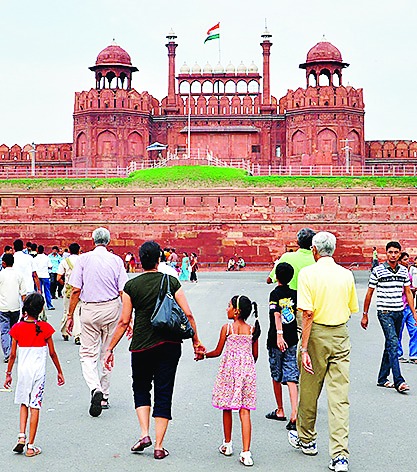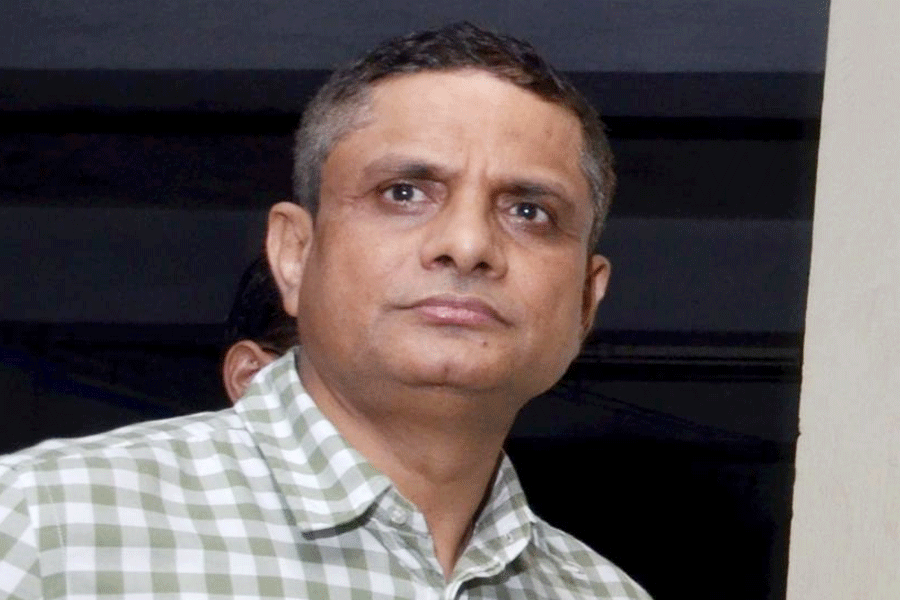
The similarities between the two men are striking. Both were born in the 1940s, both belong to the proud martial clan of Jat Sikhs, both joined the army at a young age, starting out at the National Defence Academy followed by the Indian Military Academy, both experienced wars, and both chose public life of a kind after they shed their uniforms.
That is where the similarities end and the differences begin. Captain Amarinder Singh (born 1942) joined the Indian army in 1963 and resigned in early 1965 - and rejoined when war broke out with Pakistan later that year, before leaving the service for good. A scion of the royal family of Patiala, he fought and won a Lok Sabha seat on a Congress ticket in 1980. He left the Congress in protest against Operation Blue Star, but returned to its fold, serving his first term as chief minister from 2002-2007. He is back at the helm in Punjab, after securing a handsome victory for the Congress less than three months ago.
Lieutenant General H.S. Panag (born 1948) is younger than the captain and has no royal lineage or political eminence to speak of. He joined the Aam Aadmi Party as an ordinary member in 2014 and never sought nor received any post. But as far as military experience goes, General Panag is way ahead of the captain. The only three-star general from the mechanized infantry, he held two of the most important commands - GOC-in-C Northern Command and GOC-in-C Central Command - before retiring from the service with high honours (PVSM, AVSM) at the close of December 2008.
But the most profound difference between the captain and the general lies not in their rank or experience in and out of the army but in their contrasting reaction to what took place in rural Srinagar last month. It is a difference that should engage us all.
On April 9, when a by-election was held in the capital of Jammu and Kashmir which saw a mere 7 per cent turnout, an army unit led by Major Leetul Gogoi arrived at the polling station in Utligam village of Budgam district to control, it claims, a stone-pelting mob. The army's version and the versions of the villagers of what actually happened vary widely.
But the one incontrovertible fact, caught for posterity in a horrific video image, is that a young Kashmiri man named Farooq Ahmad Dar was strapped to the bonnet of the army jeep and used as a "human shield", ostensibly to deter stone-pelters.
Farooq Dar, 26, did not belong to Utligam. He belongs to Chill village some 20 kilometres from Utligam and was passing by on his motorcycle to pay a condolence visit to the home of a bereaved relative some distance away. An embroidery artisan, Dar - ironically - voted earlier in the day, a fact that can easily be cross-checked not just from the indelible ink on his finger but also from the serial number on the voter roll (No. 612, according to reports).
But whether he voted or not is beside the point. To tie up a civilian to a moving vehicle and drive around for miles violates all tenets of legality, morality and human dignity, and goes against norms and conventions drawn up to limit barbarism even in times of war.
The incident may never have come to light but for the video which surfaced five days later on April 14. The army did not issue an outright denial, and said the contents of the video were being "verified and investigated". It also ordered a court of inquiry, the report of which is yet to be officially released.
The report has become unnecessary because Major Gogoi has already been declared a hero. And leading the cheerleaders was not someone from the ruling party but Captain Amarinder Singh. Without waiting to ascertain the facts of the case, the captain declared that the major deserved a medal for his "remarkable presence of mind and timely action".
In an article in The Indian Express, the Punjab chief minister also advocated "a tooth for a tooth and a nail for a nail", and wrote, "When Major Gogoi decided (and, mind you, it could not have been anything other than a split-second decision) to use a civilian as a 'human shield' to protect his men from a stone-pelting mob, he was simply reacting to a tough situation in a dangerous environment."
For most civilians, brought up to venerate the army, the captain's words were persuasive. In spite of reports of army excesses in areas where it is deployed to quell "internal unrest" - the Northeast, the Kashmir Valley - most Indians still regard the army with awe and respect. When an army column arrives in a riot-torn area where the police are invariably seen as complicit, there is always a huge sense of relief. This is because the army is seen, at least from afar, as brave, fair, neutral - even noble.
The sight of the hapless, trussed up Farooq Dar - who was let off after he remained tied to the jeep as it drove through several villages for five hours, according to several reports - shattered this fond image of the army. But any criticism, especially in the hyper nationalist times we live in, would be deemed anti-national, or at best dismissed as just so much drivel spouted by "bleeding heart liberals" who have no appreciation of what tough men have to do in tough times.
That is why General Panag's reaction, completely in contrast to Captain Singh's, was so remarkable and reassuring. The general, after all, is no lily-livered civilian and is certain to have seen more strife and handled tougher situations (including in Kashmir) than both Leetul Gogoi and Amarinder Singh.
In tweets and interviews, the general made it clear that what had taken place was illegal and inhuman and the army had never used a human shield like this before. On April 15 itself, he tweeted, "Image of a 'stone pelter' tied in front of a jeep as a 'human shield', will 4 ever haunt the Indian Army & the nation!"
In an interview to a television channel, he was even more devastating. "This image will end up being the defining image of the Indian Army, just like the napalm girl was for the Vietnam war," he said, referring to the famous photograph of a naked child running away from napalm bombing.
But, unsurprisingly, the captain has won the day. Without waiting for the court of inquiry to complete its investigation, the chief of the army staff, Bipin Rawat, conferred on Major Gogoi a commendation card for "his sustained distinguished services... in counter-insurgency operations in Jammu and Kashmir".
In doing so, the army chief appears to have poured a bucketful of salt on the raw psyche of the Kashmiri people and mocked those who were shocked by the incident. Major Gogoi may have committed an indefensible act in the heat of the moment. But General Rawat has taken a cold, calculated decision to endorse it as an act of valour, worthy of emulation - leaving the field open for other officers and men to use "human shields", perhaps even of schoolgirls who, too, have now taken to pelting stones.
For the moment, the view of Captain Amarinder Singh may have far more vocal support within the army. But in barracks and cantonments, away from the shrill public discourse, many officers and men will also, hopefully, weigh General Panag's words with care - and realize that Major Gogoi's exploit has diminished us all, and must be remembered as a transgression, not a triumph; an act of cowardice, not courage.










